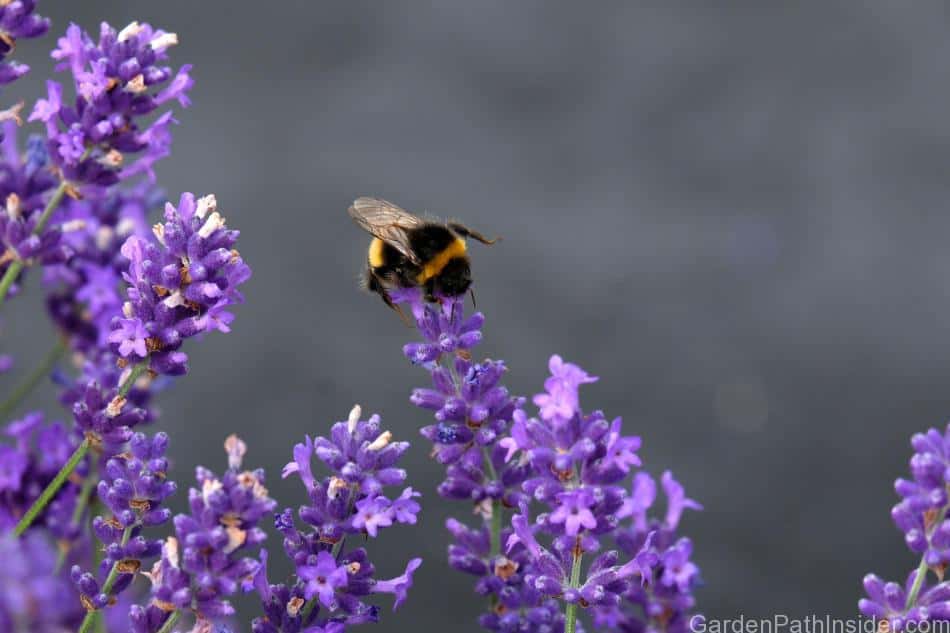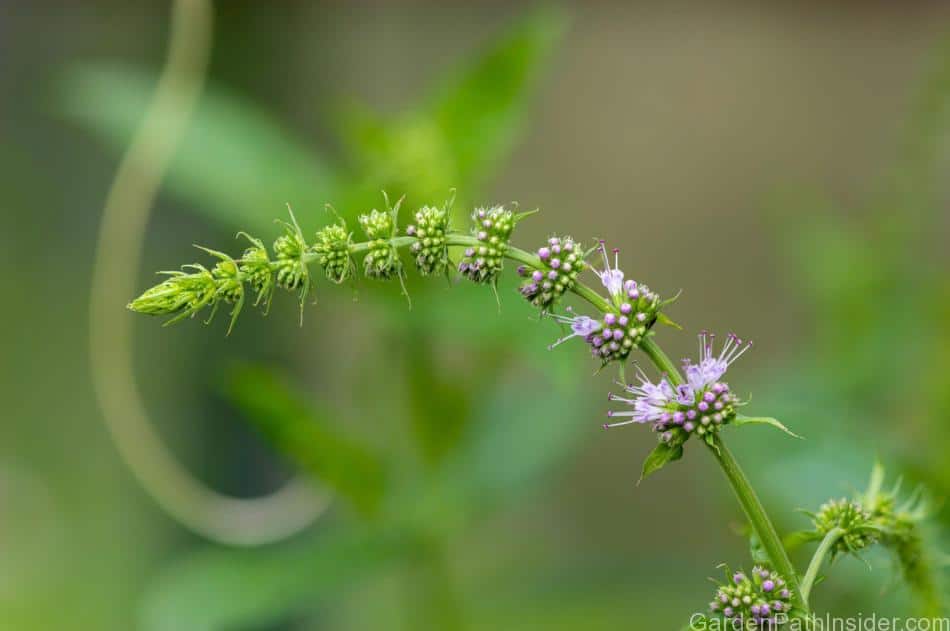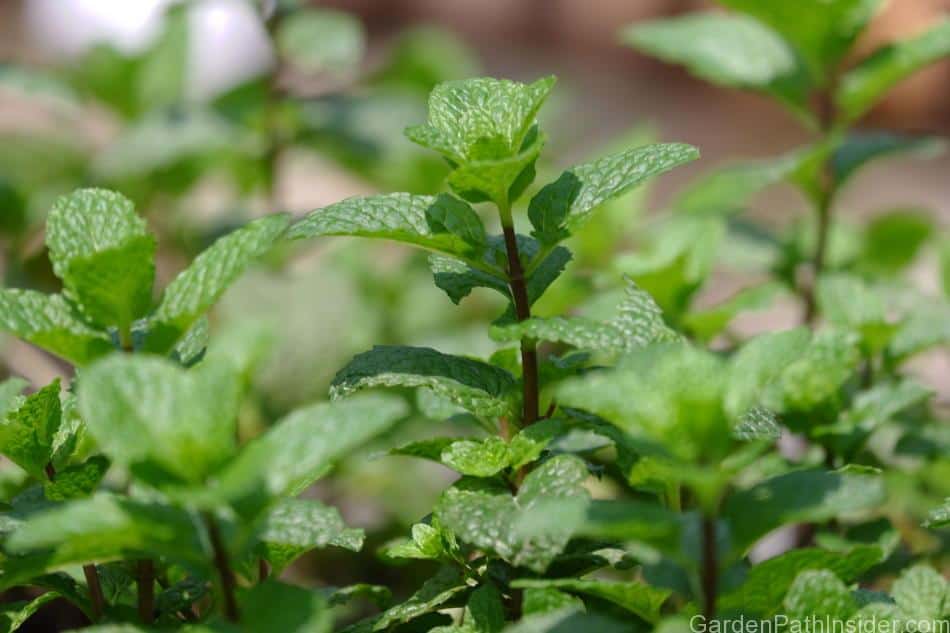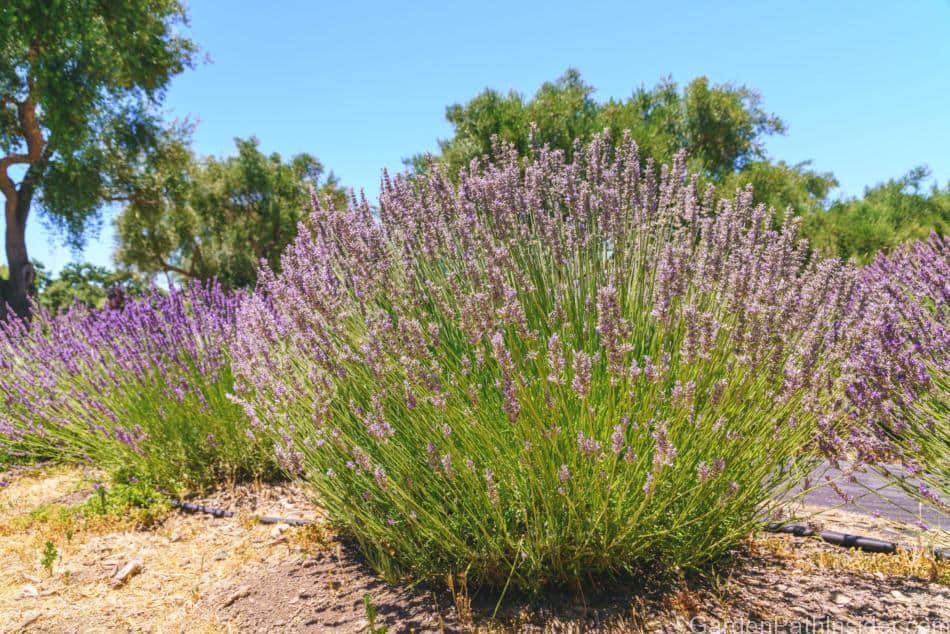
Mint and lavender are excellent additions to any herb garden. Both herbs have a wide variety of uses in many meals, desserts, jams, and even household items like candles and relaxing essential oils.
Mint and lavender should not be planted together as mint requires moist fertile soil, and lavender requires drier neutral to alkaline soil. Also, mint is an invasive species, quickly overtaking any growing area. Mint and lavender are great companion plants to grow side by side in separate containers, as both herbs thrive in hot, full sun environments.
Mint and lavender can be grown in almost any size growing space available. Once the mint and lavender are potted, maintenance is simple, and your efforts are rewarded with an abundance of fresh flavorful herbs all season long.
Overview of Mint

Mint is a perennial herb, and its edible leaves are harvested for use in beverages and other treats. Spreading quickly and easily overtaking its growing space, mint is an invasive species that should be grown in a fully contained environment.
There are many varieties of mint, with some growing to 36 inches tall (91cm). Though many varieties grow to around 18 inches (45cm). The varieties range in flavor and fragrance from sweet mints to savory flavors like chocolate mint.
Mint requires moist fertile soil and full sun. Water daily as mint consumes a lot of water during peak growing season. If planting mint outdoors in a garden bed, take care to use a garden bed barrier planted in a perimeter around your mint plant. Mint spreads rapidly as its roots called rhizomes, grow out horizontally continuously through the season. A mint patch can easily take over your garden and keep returning for several seasons if not frequently pruned and cut back.
Overview of Lavender
Lavender is a fragrant perennial herb used in beverages and treats like ice creams and cakes. Lavender grows in a mound with bushy leaves clustered in a mound with blue and purple flowers on tall, elegant stems standing above the bush.
Lavender is native to the Mediterranean and thrives in neutral to alkaline soils that are well-draining. Plant in a location that gets full sun (6 to 8 hours per day). The size of lavender varies by variety, with some of the dwarf varieties reaching only 10 inches tall (25cm) and large outdoor varieties reaching 24 inches tall with 24 inches spread (60cm tall by 60 cm spread).
The flower of the lavender plant is harvested for use in the home. The flowers are cut from the plant and hung upside down in bundles as they are dried for preservation. Depending on the variety, lavender can bloom in spring, summer, or fall.
Container & Growing Space Requirements
Mint can thrive in any size container as the roots do not grow deep in the soil, the roots grow to about 6 to 8 inches (15cm to 20cm) down, then begin to spread out horizontally in the soil. Mint is an invasive species as the horizontal roots, called rhizomes, spread quickly overtaking any grow space they are planted in.
Plant mint in a pot at least 8 inches deep (20cm) and as wide as your growing space allows. The larger the growing container, the more mint you will be able to harvest during the season.
Lavender grows in many different varieties that vary in height from around 10 inches tall (25cm) in the dwarf varieties, to over 24 inches in the larger lavender gardens and farms.
For lavender, use a pot with a diameter of 4 to 8 inches (10 to 20 CM) larger than the lavender’s root ball. Pots that are too small will get congested as the roots develop, stunting the growth and requiring the lavender to be transplanted to a larger container.
Clay pots are my first choice for container gardens, as the clay is porous and allows the root ball to thoroughly drain after watering. Plastic pots have their own functionality as many plastic pots have built in drainage reservoirs.
Soil Needs for Mint and Lavender
Mint can grow in many soils, though it thrives in moist fertile soil. Mint is an invasive species and can grow like a weed in your garden in rocky soil or fertile topsoil. However, if you are intentionally growing mint to harvest and eat, then fertile moist soil will provide the most tender healthy leaves. Mint grown in drier sandy soil tends to have stringy leaves and brittle stems.
Lavender can grow in many soils, though it thrives in neutral soil. Lavender is native to the Mediterranean and can grow well in sandy rock soil, though I still add fertilizer once at the beginning of each season.
Lavender does well planted outside in warmer climates and will go dormant during the winter months, and return in the spring. Lavender planted outside in cold climates may not survive the harsh winter, and have to be replanted each season.
Water Needs for Mint and Lavender
Mint Water Needs
Mint requires moist soil, and a thorough watering several times per week. Mint patches spread continuously during the growing season and may require watering twice daily in extreme heat.
Watering potted mint. Potted mint is more susceptible to overwatering than mint grown in garden beds. When watering potted mint look for the signs of dehydration and check the soil daily by lightly pressing your fingertip into the soil.

Signs of dehydration in mint:
1: Dry Soil: Check the soil moisture levels by touching the soil with your fingertip, if the soil feels dry to the touch then water thoroughly as needed. If you have a larger garden, it may make sense to invest in a soil moisture monitor for the plants that are more prone to overwatering.
When the soil is dry throughout the pot, the soil will begin to pull away from the sides of the pot. This tip applies to any potted plant. Mint will likely begin to wilt before the soil gets dry enough to pull away from the sides.
2: Wilted leaves: Wilted leaves could mean two different things in mint plants. 1 the plant is dehydrated, or 2 the plant has been overwatered and the roots are slowly drowning. Looking at the leaves alone can only tell you there is a problem with the plant. Look to see the soil’s moisture levels to see if the soil is too dry or too wet.
3. Drooping stems: when mint begins to dehydrate the tips of new growth on each stem begin to droop down and hang. After checking the soil, water thoroughly as needed.
Pro Tip: Mint leaves plump up after the plant is watered, making it a great time to harvest any mint for your kitchen.
Lavender Water Needs
Lavender’s drought resistance is a key to its success in its native Mediterranean climate. When watering potted lavender, water the plant until water begins to flow out of the bottom of the pot. I always keep potted plants on glass or clay dishes to collect the excess water that drains from the plant.
If you do not have dishes under your pots, you can water the pots in a large sink or tub and leave the plants in the sink until they finish draining completely. If you are using this method, it’s a good idea to water the plants thoroughly at night so the plants can stay in the sink overnight to drain.
Watering outside lavender: Thoroughly saturate the soil, taking care to not overwater the plant causing muddy soil. Water when the soil feels that it’s beginning to dry out. If the soil is damp, then no water is needed.
If the lavender leaves begin to droop AND the soil is moist, then the roots may be waterlogged, and the plant could be drowning. To avoid this, check the plant frequently throughout the week, and water only when the soil begins to dry to the touch.
Light Needs for Mint and Lavender

Both mint and lavender require 6 to 8 hours of full sun per day to fully thrive, though both plants will still grow in partial sun. Potted mint and lavender that are grown indoors should be placed by a window with full sun, though be careful to keep the potted plants away from direct heat, like ovens, heaters, and heating ducts.
Harvest Time for Mint and Lavender
Begin to harvest mint once the plants have grown a few inches tall. Mint leaves are edible as soon as they form, however it’s best to wait to harvest until the roots have established and the plant is more mature.
To harvest mint, use a pair of sharp scissors and cut the leaves off the stem. Be careful to not break the stem during harvest. Harvested mint leaves can be stored in paper towel, and placed in a refrigerator. If you do remove a longer stem from a mint plant, you can place the full stem in a cup of water and harvest the leaves as needed over a few days.
To harvest lavender at its peak, wait until the lavender’s purple flowers bloom and then snip the flowers as far down the stem as possible. When you have harvested a large handful of lavender flowers, tie the bundle together with twine and hang upside down to dry for a few days.
Pro tip: When drying lavender, place a bowl or bucket under the hanging lavender cuttings. As the flowers dry the seeds of the plant will fall from the flowers into the bowl. These seeds can be collected and used to grow the next garden bed of lavender.
Read here for more information on growing lavender from seeds.
Summary Chart for Mint and Lavender
| Plant | Soil type | Water needs | Light needs | Bloom time | Harvest time |
| Mint | Loose well-draining fertile soil | Keep the soil slightly damp to moist. Water as needed. | Full sun(6 to 8 hours per day) | Spring/Summer | Mint leaves are edible at any time, though best practice Is to wait until the plant gets at least 6 inches tall (15cm) before harvesting. |
| Lavender | Drier sandy soil | Water the soil thoroughly as needed checking the soil daily. Look for drooping branches and dry soil pulling away from the sides of the pot before you water. | Full sun (6 to 8 hours per day) | Depending on the variety of lavender blooms occur in spring, summer, and fall. | Harvest lavender after the flowers have bloomed. Depending on the variety of lavender, the blooms may happen several times in the growing season. |
Cover image: Bees on lavender in bloom_© Man Hin Sin/123rf.com
